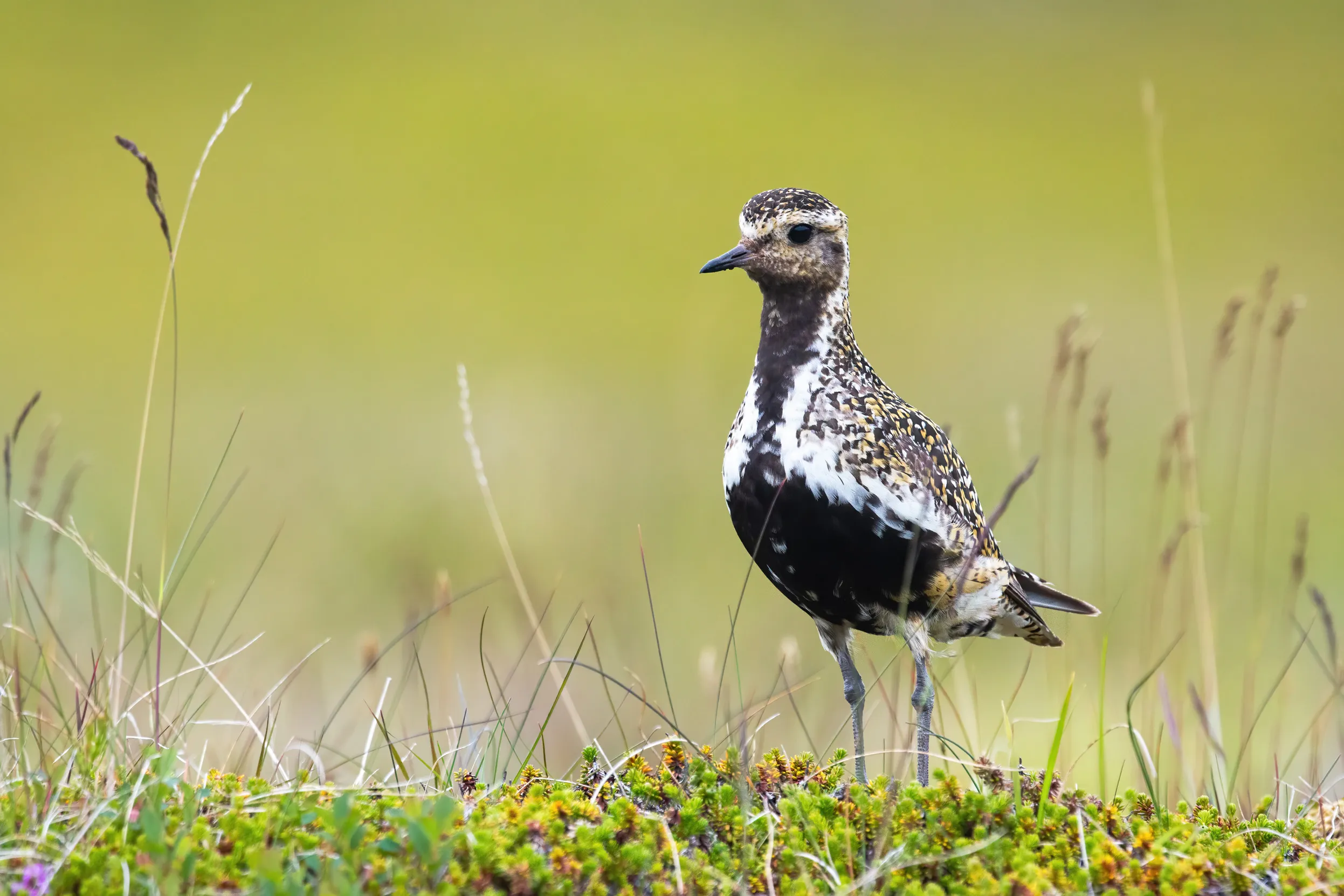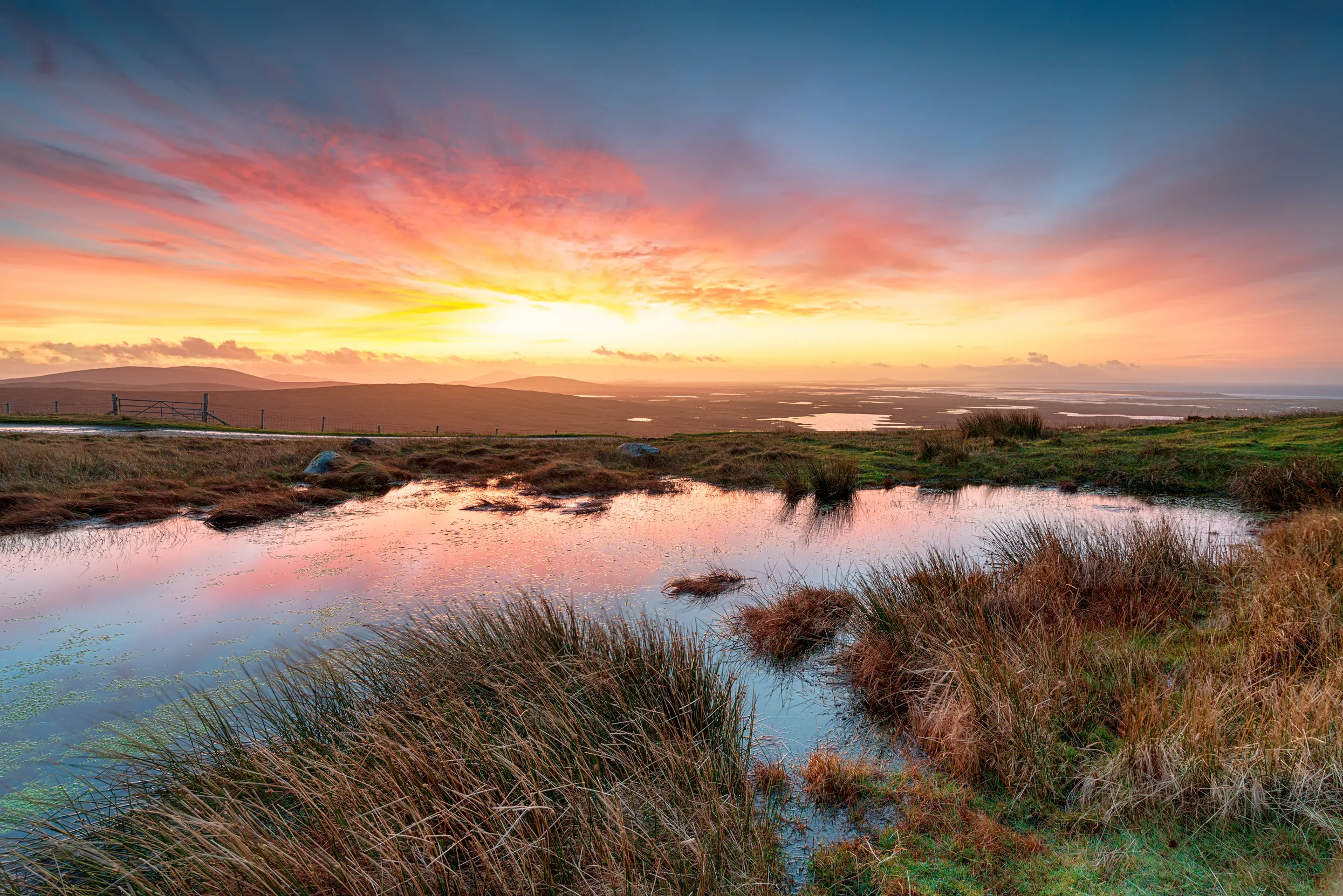News
Day of action for Turtle Doves highlights the need for nature-friendly farming
We took the plight of Turtle Doves to Parliament to share a message of hope for these festive icons.
The Flow Country, which includes RSPB Forsinard Flows, in Caithness and Sutherland, Scotland, becomes first ever peat bog to be awarded World Heritage Site status.

On Friday 26 July, UNSECO announced that the Flow Country, including land managed by the RSPB at Forsinard Flows, would join the Great Barrier Reef and the Grand Canyon as a recognised World Heritage Site. A part of the largest expanse of blanket bog in the world, 190,000 hectares of the Flow Country will gain the international status – that’s an area seven times the size of Glasgow!

The celebration was marked by a visit to Forsinard from the RSPB’s patron, King Charles III on Wednesday 31 July. Joining the bid team, RSPB Scotland staff, volunteers and community members, The King unveiled a plaque to commemorate the World Heritage Site status.
During the visit, he was briefed on the dedication of the bid team in achieving this accolade, the significance of the Flow Country’s natural ecosystems and its contributions to biodiversity and the economy in the north of Scotland.

In the 1990s, the RSPB first purchased a small piece of land at Forsinard Flows and we now manage 21,000 hectares of land at the heart of the Flow Country. Here, RSPB Scotland are pioneering methods of peat bog restoration, sharing ideas with surrounding land managers and working in partnership to scale up restoration across this landscape, as part of the Flow Country Partnership.
Flow is derived from the Norse word ‘Floi’, meaning wet or marshy – and it’s easy to see why the area is named as such. It’s a part of 400,000 hectares of peat bog, making it the largest expanse of blanket bog in Europe. Along with being instrumental in tackling the climate emergency, peat bogs support important threatened wildlife.
Golden Plovers and Greenshanks raise their chicks in the Flow Country, feasting on the abundance of invertebrates in the wet, boggy uplands. Hen Harriers cruise overhead, scoping out small mammals, while White-tailed Eagles coarse along the coastline. The pools and inland lochs support breeding populations of rare Black-throated Divers, and the water quality is fit for large populations of salmon to spawn.

Through the 20th century, long before the value of carbon capture had even been thought of, many peat bogs were repurposed. These uplands were too wet for growing crops or for building property, so the land was cheap – there were even tax incentives to grow forestry plantation on a bog! Peat was also considered to be a valuable energy source, burning hotter than coal, and so it was often dug up for fuel.
Many miles of drains were installed to dry the land for grazing, while nearly 20% of the Flow Country was drained and planted with forestry plantations. Through partnership working and external funding, over 2,600 hectares of inappropriate plantation forestry have been removed so far.
Trees often steal the limelight when it comes to carbon capture, but the Flow Country alone stores more carbon than twice the UK’s woodlands and forests combined! That’s over 400 million tonnes of carbon, estimated to be equivalent to 100 years’ worth of the country’s emissions from burning fossil fuels.

The wet and acidic conditions of a blanket bog prevent decomposition. A plant absorbs CO2 throughout its life, which is then usually released when it dies and decomposes. But in a wet bog, dead plants are preserved, instead holding onto the carbon, and forming layers of peat.
But, this is a slow process. Only 1mm is formed each year, so the peatlands we have are precious – they aren’t easy to replace. Some of the peat in the Flow Country is 10m deep, with around 10,000 years’ worth of accumulation!
UNESCO recognises exemplar places through World Heritage Site status. The Flow Country is now the 36th World Heritage Site in the UK, and alongside the Jurassic Coast, it will become one of only five ‘wholly natural’ Sites in the UK. As the first peat bog globally to be recognised with this status, it showcases the high-quality work happening here and gives the partners an authoritative voice in peatland restoration projects around the world. The recognition of the site, and the increased public awareness, also ensures the Flow Country’s protection.
Previous UNSECO recognised sites have benefited from increased tourism, and resultantly, prosperity and new investment. In a series of community consultations held in 2018 and 2019, the residents of Caithness and Sutherland voiced that they hoped for an increase in sustainable tourism, funding for community projects and environmental protections in the region.
The Flow Country Partnership is working on blending public and private finance to increase peatland restoration across this landscape. The plans for the future feature ambitions around restoration, tourism, skills development and community benefit.
Anne McCall, Director at RSPB Scotland says: “This is fantastic news, the Flow Country is now listed alongside the Great Barrier Reef, Yellowstone National Park and the Galápagos Islands as one of fewer than 250 natural World Heritage Sites.
The UNESCO inscription recognises how important this inspiring landscape is for nature, but also the important role generations have played in protecting this special place. A legacy that continues today in the Flow Country Partnership as local communities and landowners work together as custodians of the world’s largest blanket bog.”

Our staff and volunteers have worked tirelessly on site to deliver habitat restoration on a landscape scale, benefitting both people and our wildlife. We’re thrilled to be celebrating this recognition alongside our partners at the Flow Country Partnership, and NatureScot, The Highland Council, University of Highlands and Islands, Highlands and Islands Enterprise and Wildland Ltd on the World Heritage Steering Group. We also give thanks to ScotGov, whose funding through Peatland Action has been vital to peat bog restoration across Scotland, along with previous funders, EU LifeIFE and NLHF.
And we’d like to say a big thanks to you – our supporters. With you on board, we’re able to protect our wildlife and our wild places, like the precious peat bogs at RSPB Forsinard Flows. The first land holdings in this area, purchased through funds raised by you, have made our work here possible.
Read more about the importance of peatlands: Can peatlands save the planet? (rspb.org.uk)